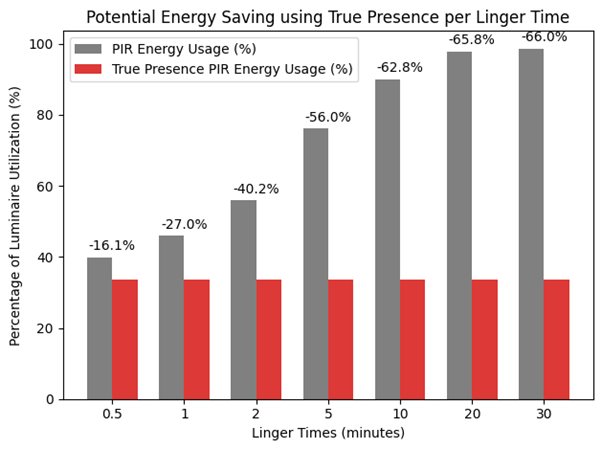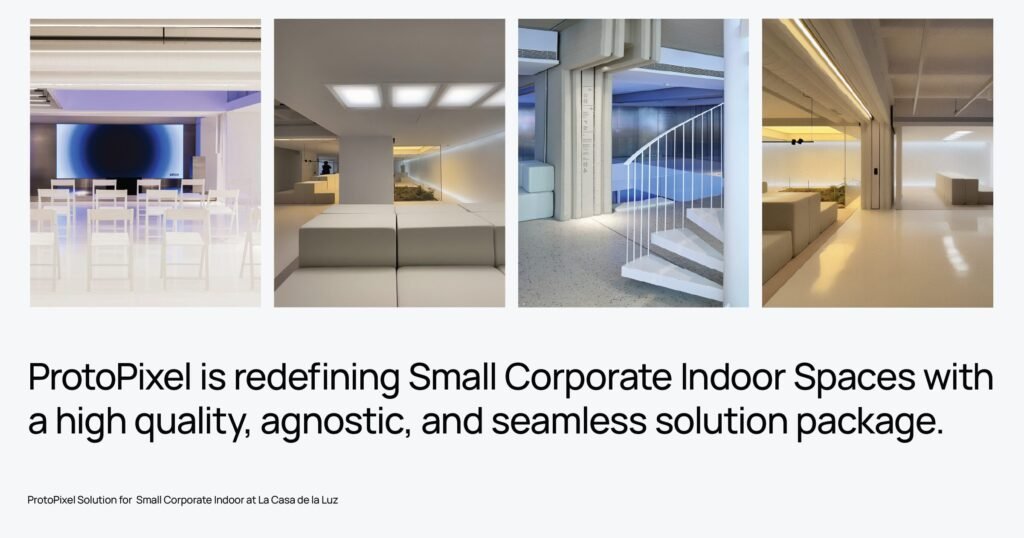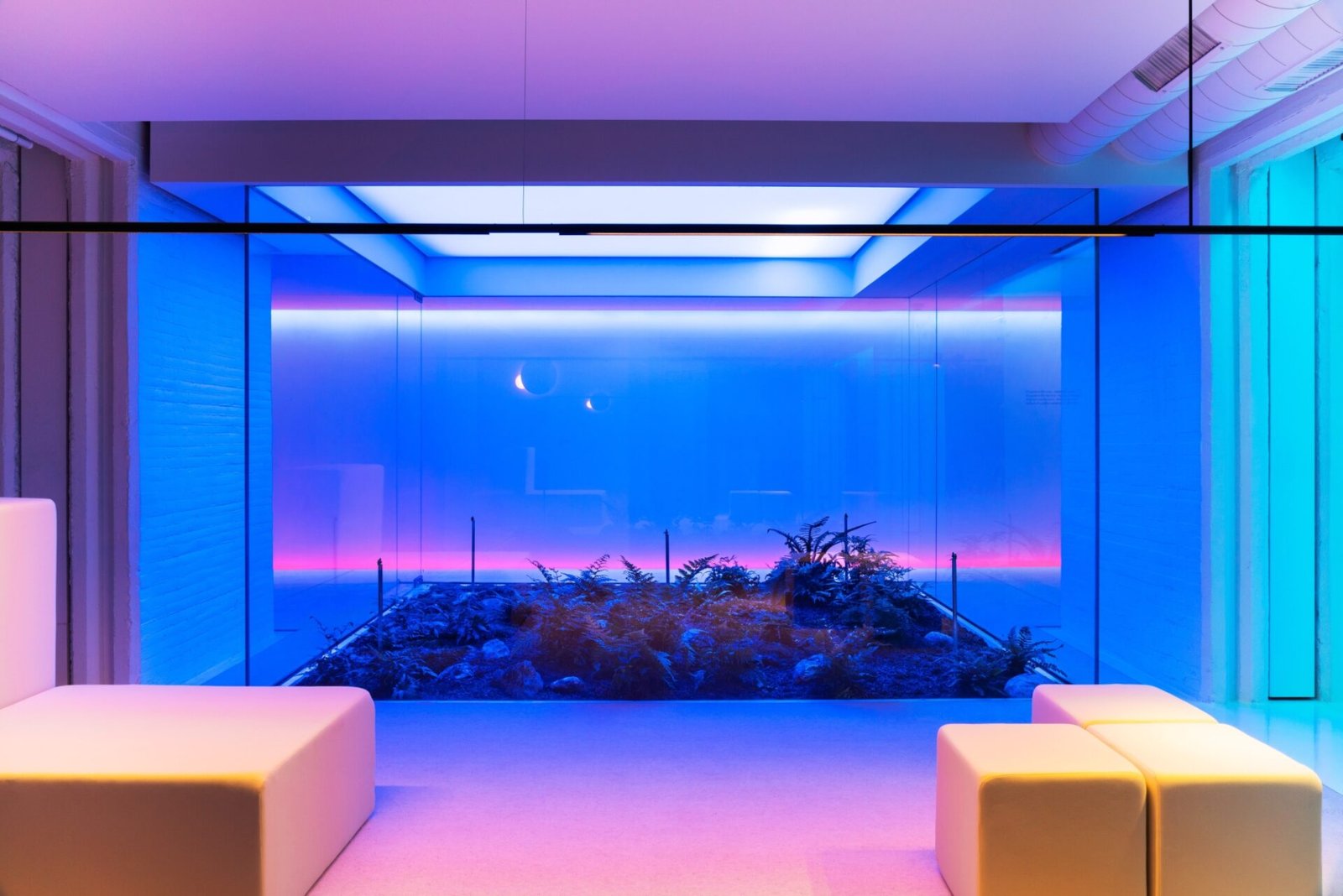
Introduction to ProtoPixel: Revolutionising Dynamic Lighting Control
Share:
“Light is the first element of design; without it there is no colour, form, or texture.” – Thomas E. Farin
ProtoPixel is changing the game in lighting design. It offers tools that let creators make amazing visual experiences. We’re excited to show you how ProtoPixel is making dynamic lighting control better.
With ProtoPixel, lighting designers can create any mood or scene they want. The platform lets users check their designs first, making sure they’re perfect. It’s all about making things look great, work well, and be green.
We’ll look at ProtoPixel’s cool features like adjusting settings, sensing people’s presence, and scheduling. Come with us as we see how this new tech is changing lighting design.

Understanding ProtoPixel: The Future of Lighting Design
ProtoPixel Suite is changing the way we design lights. It brings new solutions for controlling lights in a flexible way. Designers can now make amazing visual experiences with great precision.
What is ProtoPixel?
ProtoPixel is a new platform that changes lighting design. It has tools for both static and dynamic lighting control. Designers can change each light point to make detailed and beautiful scenes.
The evolution of dynamic lighting control
The lighting world is moving towards more dynamic control systems. ProtoPixel leads this change, making it easy to control different light types. It brings together simple and complex lights into one design.
Key features of ProtoPixel Suite
ProtoPixel Suite has many features that make it stand out in lighting design:
- Intuitive design tools for easy creation
- Collaborative project environments
- Flexible control options for various lighting situations
- Real-time visual feedback
- Works with industry-standard protocols
These features make ProtoPixel Suite a must-have for lighting experts. They use it to create immersive environments with dynamic control.
Unleashing Creativity with ProtoPixel’s Design Tools
ProtoPixel design tools open up a world of creative possibilities for lighting designers. They let users craft unique lighting moods and scenes with precision and flexibility.
The Content Library at the heart of ProtoPixel is a treasure trove of adaptive presets. It helps designers keep up with lighting trends. This gives them inspiration and a solid base for their projects.
ProtoPixel’s tools let designers preview their designs before they start. This means they can make sure their vision comes to life, saving time and resources.
ProtoPixel’s design tools have revolutionised our approach to lighting design. The ability to create and preview complex lighting moods has dramatically improved our project outcomes.
The platform supports both static and dynamic lighting control at the pixel level. This lets designers create immersive and atmospheric lighting experiences. These experiences captivate audiences and transform spaces.
With these powerful ProtoPixel design tools, lighting professionals can push the boundaries of creativity. They can craft visual experiences that were once thought impossible.
ProtoPixel’s Approach to Static and Dynamic Lighting
ProtoPixel is changing the game in lighting design with its new take on static and dynamic lighting. This platform gives designers amazing control and flexibility. They can make stunning visual spaces with ease.
Pixel-to-pixel Control Capabilities
ProtoPixel’s tech shines with its pixel-to-pixel control. This lets designers play with each light point for detailed patterns and effects. It works for both static and dynamic lighting, offering top-notch detail and customisation.
Orchestrating Various Light Types
ProtoPixel is great at mixing different light types in one space. It handles everything from simple on/off lights to complex dimmable ones. This means designers can make lighting schemes that fit many needs and moods.
Creating Impactful Environments
ProtoPixel combines pixel control with support for many light types. This lets users make environments that really stand out. The easy-to-use interface makes working with static and dynamic lighting simple, creating spaces that grab and inspire. With ProtoPixel, lighting designers can explore new creative heights. They can mix static and dynamic lighting for unforgettable experiences.
Collaborative Project Design with ProtoPixel
ProtoPixel’s platform changes how we work on lighting projects. It makes it easy for different people to work together. This brings exciting lighting ideas to life.
Our floorplan feature is key to working together well. It lets many team members see and add to projects at the same time. Users can start projects fast by importing .dxf files and use tools like Dialux too.
ProtoPixel shines with its real-time updates. When someone makes a change, everyone sees it instantly. This keeps the design consistent and cuts down on mistakes and changes.
“ProtoPixel’s collaborative tools have transformed our workflow. We can now design complex lighting projects with unprecedented efficiency and creativity.”
Our platform covers many parts of managing lighting projects:
- Easy sharing and keeping track of versions
- Working on lighting designs together in real-time
- Tools for talking to the project team
- Custom roles and permissions for users
ProtoPixel helps lighting designers work better together. It makes teamwork easier and improves the design process. This leads to more creative and effective lighting solutions.
ProtoPixel’s Interoperability and Hardware Compatibility
ProtoPixel is a leader in the lighting control field, known for its top-notch interoperability and hardware compatibility. It connects easily with many hardware and software, making it a go-to for lighting experts.
Integration with Various Lighting Systems
ProtoPixel’s platform is easy to integrate with different lighting systems. It works well with lights, switches, sensors, and Building Management Systems. This means users can set up complex lighting scenes without any issues.
Compatibility with Industry Standards
ProtoPixel is dedicated to following industry standards. It supports protocols like:
- SPI (Serial Peripheral Interface)
- DMX (Digital Multiplex)
- DALI (Digital Addressable Lighting Interface)
- DALI2
- Casambi
This wide support ensures lighting systems from various manufacturers work together smoothly.
Local API for Custom Integrations
ProtoPixel’s local API lets developers create unique solutions. It’s perfect for making the platform fit specific project needs. This flexibility makes ProtoPixel great for complex lighting projects in many industries.
“ProtoPixel’s interoperability transforms lighting control, offering unparalleled flexibility and creativity in design” says Mat Hanson.
ProtoPixel’s focus on working well with other systems and offering custom options changes how we control lighting. It’s making lighting control more flexible and creative.
Efficient Project Implementation and Management
ProtoPixel is changing the game in the lighting industry with its new tools. These tools make setting up projects quicker and easier. They automatically find and connect fixtures, cutting down the time it takes to get started.
Our platform lets you group and cluster lights on a floor plan easily. This makes complex lighting setups simple. Users can arrange lights in a logical way, making everything more efficient.
Setting up schedules and automatic lighting actions is easy with ProtoPixel. You can create complex lighting scenes and responses. This makes spaces look and work better. The project status overview gives you detailed insights, helping you manage projects better.
“ProtoPixel’s user-friendly interface has transformed our approach to lighting design and implementation. It’s intuitive, powerful, and incredibly efficient.” – Sarah Thompson, Lighting Designer
Our mobile app lets you control all lighting moods and setups from your phone. You can make changes and control lights in real-time. This means your lighting can always meet the needs of the moment.
ProtoPixel Spaces: Tailored Lighting Control
ProtoPixel Spaces changes how we control lighting, making it super custom for different places. It lets users make lighting that fits their needs and likes.
Setting up and configuring spaces
Setting up lights is easy with ProtoPixel Spaces. It turns digital lighting ideas into real-life settings smoothly. This makes moving from planning to doing simple.
Customisation options for different user profiles
ProtoPixel Spaces has options for all kinds of users. It offers easy and complex lighting control through smart widgets. This means it helps everyone, no matter their lighting knowledge.Automation and rule-based lighting control
ProtoPixel Spaces is great at making lighting automatic and smart. It uses time, mood, sensors, and API data to control lights. This means lights can change based on what’s happening and what you want.
“ProtoPixel Spaces transforms lighting control from a static function to a dynamic, responsive experience.”
ProtoPixel Spaces has an easy-to-use interface and lots of features. It leads in making lighting control custom and automated for many uses.
Conclusion: The ProtoPixel Revolution in Lighting Control
ProtoPixel leads the way in the dynamic lighting control revolution. It gives designers the tools to be more creative. This platform is changing the future of lighting design, setting new standards.
ProtoPixel’s tools make working together on projects easier. It offers flexible control for all kinds of projects, big or small. It also works well with other systems, making it great for professionals.
Looking to the future, ProtoPixel’s effect on lighting is obvious. It’s more than just a tool; it’s a game-changer. By making lighting more immersive, ProtoPixel is lighting the way to a brighter future in lighting design and control.
FAQ
What is ProtoPixel?
ProtoPixel is a cutting-edge solution for dynamic lighting control. It offers tools that empower creators to make stunning visual experiences. It’s an open platform that changes lighting design with its tools.
What are the key features of the ProtoPixel Suite?
The ProtoPixel Suite has design tools, project creation for teams, and flexible control. It gives pixel-to-pixel control for static and dynamic lighting. Users can import and manage different light types.
How does ProtoPixel facilitate creativity in lighting design?
ProtoPixel’s design tools give users unmatched creative freedom. They can make unique lighting moods and scenes. The platform has a Content Library with adaptive presets to keep designers ahead of trends. Users can preview their designs to ensure the look they want.
What lighting control capabilities does ProtoPixel offer?
ProtoPixel offers precise control over lighting, from pixel to pixel. Users can manage static and dynamic lighting with great accuracy. It supports various light types, making environments where lights work together well.
How does ProtoPixel facilitate collaborative project design?
ProtoPixel makes working together on projects easy with its floorplan feature. It helps teams work well together. Users can start projects by importing .dxf files and use solutions like Dialux for better work.
What is ProtoPixel’s approach to interoperability and hardware compatibility?
ProtoPixel is great at working with different hardware and software easily. It connects to many luminaires, switches, sensors, and Building Management Systems. It follows standards like SPI, DMX, DALI, and DALI2.
How does ProtoPixel streamline project implementation and management?
ProtoPixel makes starting projects faster with automatic discovery and commissioning tools. It has options for grouping and clustering in the floor plan. Users can set up programs and automatic behaviours, making management easier. The project status overview helps manage projects better.
What is ProtoPixel Spaces, and how does it enable tailored lighting control?
ProtoPixel Spaces lets users set up and control lighting in spaces. It offers detailed control over lighting distribution. Users can adapt lighting from digital to real spaces. It has custom options for different users and supports automation and rules for lighting control.




